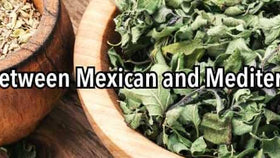Vanilla Bean History
The history of vanilla beans is one filled with violent acts, scientific oddity, and both experiential flavor and aromatic desire. It is quite perplexing that vanilla, an ingredient whose name has become synonymous with the word, “plain”, has such a storied past that would give even the most epic of fantasy trilogies a run for their money. Let’s dive into the intriguing tale of the vanilla bean.
Far From Plain, Vanilla Boasts a Gripping History That Will Keep You On The Edge of Your Seat
Vanilla beans span the globe and there is a plethora of species, grades, and geographical origin identifiers that allow us to categorize them for optimal applications. Despite these categorical buckets, the recorded history of vanilla can be traced back to one specific bean: Vanilla Planifolia
Planifolia Vanilla Beans
Planifolia vanilla beans are the earliest recorded vanilla beans. They have been dubbed Madagascar vanilla beans and Bourbon vanilla beans, due to the area being a top producer of this variety, but they are actually native to South and Central America and are believed to have been first discovered in Mexico by pre-Columbia Mayans, though it was the Totonacs of present-day Veracruz, Mexico who are credited with first cultivating it, and the Aztecs who made it famous with the first incarnation of hot chocolate, or xocolatl (also spelled chocolatl).
A Fabled Story of Vanilla
Conversely, the Totonacs were not noted as utilizing vanilla beans for culinary purposes, but rather medicinally, as a perfume, and as an offering to their gods. It was a sacred in their culture, with a tragic backstory that even positioned it as a critical part of their existence. You see, the Totonocs believed vanilla essence flowed through the blood in their veins. Let’s look at the mythical roots of this belief.
It was said that there was a young princess whose father made her take a vow of chastity. Despite being amongst the virgin maidens whose sole purpose was to serve the Goddess of Fertility (a goddess who happens to be the protagonist of a separate vanilla origin myth) fell in love with a prince. Her love was returned, but as is the case with most tales of star-crossed lovers, the tale ends in tragedy. The two ran off together to get married and were slain for committing a treasonous act.
The blood of the couple ran into the earth and in its place, a tree grew tall, with vanilla vines clinging to its bark. It was believed that the tree was born of the blood of the prince and the orchid was created from the blood of the princess. The union of the two was thought to produce the vanilla bean, their child, which ripened 9 months after the first white flower appeared.
The second myth, featuring the deity who the princess served, also includes a tale of forbidden love. The Goddess of Fertility fell in love with a mortal and was unable to walk alongside him on earth. She could not stand being apart from him for eternity, so she turned herself into a vanilla orchid to be closer to him, where he and other men could inhale her sweet essence each morning as she bloomed.
The details of these legends vary slightly due to translation, geography, and the like, but they fall closely to the two aforementioned fables. Regardless which story more accurately represents those passed down by the Totonacs, it is the personification of the vanilla orchid that solidified it as an appropriate religious offering and the early popularity of what is now the second most expensive spice in the world.
The Price of Vanilla Beans
The fact that vanilla beans have a prominent existence is not something that has happened by chance. These plants, though hermaphroditic, are not able to easily reproduce. They must be pollinated to produce the seed containing pods—and the only pollinator found in nature, is a specific type of bee: the melipona bee. Meliponas are small, stingless bees that are only found in South and Central America.
So when cultivation of vanilla began to spread throughout other areas of the world, they were not fruiting because the bees did not cross the globe with the vanilla orchids. That is when hand pollination of vanilla plants was discovered. Now, most vanilla beans are the product of hand-pollination. It’s a very intricate process, and one that must take place on a very specific and small window of time. Each plant blooms just once a year for about 12-24 hours.
Once the flower blooms, if the hand-pollination is successful, the base of the flower will begin to thicken. In about nine months, the bean will have lengthened and plumped up (filled with fragrant vanilla seeds). At this point, it will be hand harvested and the curing process will begin. This is also a very lengthy undertaking that requires many months. Check out this post to learn more about it.
The length of time it takes to cultivate, harvest, and cure these beans in addition to the manual nature of the full process is just part of the reason why vanilla beans are so expensive. Like many highly desired commodities, the vanilla bean market is shrouded in associated criminal activity—thievery and raids, murders, underground markets, and other atrocities.
Unfortunately, these horrific acts have provided further fuel for higher prices because the beans are often harvested prior to optimal ripeness, which means lower quality of beans and higher demand for those that do meet quality standards.
*****
From the ancient past to the recent atrocities, the vanilla orchid and its prized fruit have been the starring role of a plot that is as intertwined in passion and turmoil as its own vines—and its history is anything but plain!







Slofoodgroup
Author